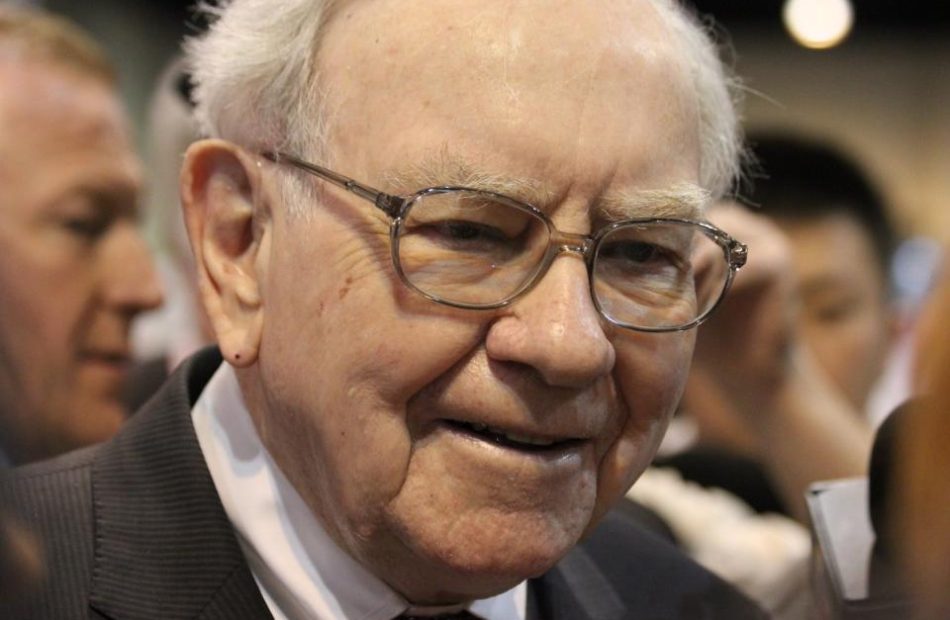Should Super Micro Computer's Response to Short-Selling Report Ease Investor Fears?
Following the Labor Day holiday in the U.S., Super Micro Computer (NASDAQ: SMCI), or Supermicro as it is commonly called, responded to a recent short-selling report from Hindenburg Research. The company sent a letter to its customers and partners and put the letter in a filing with the SEC.
The question is, should company’s response ease investors’ concerns?
Short report and response
Last week, Hindenburg — which has a short position in Supermicro and thus benefits when the stock drops — raised several issues with how Supermicro does business. The allegations included evading sanctions and shipping banned components to Russia, management self-dealing, and accounting manipulation.
The day after Hindenburg released its report, the company announced that it would delay filing its fiscal 2024 annual report with the Securities and Exchange Commission (SEC). Management said it required additional time to review the “design and operating effectiveness of its internal controls over financial reporting.”
Some investors have been particularly worried by these turns of events as the company was fined by the SEC in 2020 for recognizing revenue early and understating expenses. CEO Charles Liang was not charged with any wrongdoing but, according to the SEC, had to “reimburse the company $2.1 million in stock profits that he received while the accounting errors were occurring.” Prior to that in 2018, the Nasdaq Composite suspended and then temporarily delisted the stock for not filing its financial statements on time.
The release of Hindenburg’s report and its latest filing delay hammered the stock.
In Liang’s letter Tuesday to its customers and partners, Supermicro said that neither the short report nor the filing delay will impact its products or services. It added that its liquid-cooled solutions continue to ramp up and that it remains well positioned.
Meanwhile, it said it does not expect the delay to have any material impact on its fiscal Q4 or full-year results. It added that the short report contained “false or inaccurate statements” and misrepresented information that it had already shared publicly. Finally, the company said it would “address [Hindenburg’s] statements in due course.”
The denial was pretty standard. Meanwhile, it wasn’t great that the company’s first action after the short report was to delay its 10-K filing, especially given its past history.
Margin issues
While the short-seller’s report and delayed filing have grabbed investors’ attention, they are not the only issues that Supermicro has been dealing with lately. The company’s stock sank 20% in early August following its fiscal Q4 results after it reported very disappointing gross margin.
Gross margin, which greatly impacts profitability, came in at only 11.2% in fiscal Q4, down from 17% a year ago and 15.5% the previous quarter. Among the reasons for the decline, the company blamed reduced pricing in order to win new designs and the high costs to ramp up its direct liquid cooled (DLC) rack scale AI GPU clusters. It expects its gross margin to gradually improve throughout its new fiscal year and to return to the 14% to 17% range.
Different industries have different margin profiles, but gross margin can tell a lot about a company and how valuable its offerings or services are. Semiconductor companies riding the artificial intelligence (AI) buildout have much higher gross margin. Nvidia had gross margin of 75.1% last quarter, while Broadcom‘s was 74.8% and Advanced Micro Devices‘ was at 49%. Even a foundry operator like Taiwan Semiconductor Manufacturing had gross margin of 53.2% last quarter.
Supermicro has structurally low gross margin, well below other companies that are riding the AI infrastructure wave. And despite the company being in one of the best demand environments for AI infrastructure possible, its gross margins still worsened. That’s concerning.
Is the stock a buy now?
Trading at a forward price-to-earnings (P/E) ratio of just under 13, Supermicro’s valuation is no longer frothy.
However, this is a low-margin company with a history of accounting issues that just delayed filing its annual report. Yes, it’s benefiting from the AI infrastructure buildout, but it’s not a company with differentiated technology, like Nvidia, or one that has the scale and tech advantages, like TSMC. Dell and Hewlett Packard Enterprise, for example, are server companies that also offer direct liquid cooling.
As such, I’d stay on the sidelines, as there are better ways to play AI infrastructure with companies that have higher margin and less controversy.
Should you invest $1,000 in Super Micro Computer right now?
Before you buy stock in Super Micro Computer, consider this:
The Motley Fool Stock Advisor analyst team just identified what they believe are the 10 best stocks for investors to buy now… and Super Micro Computer wasn’t one of them. The 10 stocks that made the cut could produce monster returns in the coming years.
Consider when Nvidia made this list on April 15, 2005… if you invested $1,000 at the time of our recommendation, you’d have $650,810!*
Stock Advisor provides investors with an easy-to-follow blueprint for success, including guidance on building a portfolio, regular updates from analysts, and two new stock picks each month. The Stock Advisor service has more than quadrupled the return of S&P 500 since 2002*.
*Stock Advisor returns as of September 3, 2024
Geoffrey Seiler has no position in any of the stocks mentioned. The Motley Fool has positions in and recommends Advanced Micro Devices, Nvidia, and Taiwan Semiconductor Manufacturing. The Motley Fool recommends Broadcom. The Motley Fool has a disclosure policy.
Should Super Micro Computer’s Response to Short-Selling Report Ease Investor Fears? was originally published by The Motley Fool
The Smartest Dividend Stocks to Buy With $5,000 Right Now
When a company earns a profit, it can pay a portion to shareholders as dividends. That’s a nice reward for shareholders, providing regular income. However, it’s still important to pick strong companies that cannot only maintain dividends but increase them regularly through higher earnings and cash flow.
These three stocks fit the bill. Two of them are Dividend Kings, an illustrious group of companies that have raised dividends for at least 50 straight years.
You don’t have to start with a huge sum of money to reap the rewards, either. Investors starting with $5,000 can own shares in these three dividend-paying stocks.
1. Coca-Cola
In existence since the late 1800s, Coca-Cola (NYSE: KO) sells beverages around the world under popular brands such as its namesake, Sprite, and Fanta. While people may think of it as a soda company, its products also include items such as water, juice, and other beverages.
While the business may no longer be growing quickly, Coca-Cola has been increasing sales and gaining market share. It continues to increase profitability, including a 17% gain in the second quarter after items such as foreign currency conversion effects have been removed.
This has translated into plenty of free cash flow (FCF). In the first six months of the year, Coca-Cola’s FCF was $3.3 billion. That easily covered the $2.2 billion in dividends.
The board of directors has increased payouts for 62 straight years, including a hike of over 5% earlier this year to an annual $1.94. Coca-Cola’s shares have a 2.7% dividend yield, more than double the S&P 500‘s 1.3%.
2. Merck
Merck (NYSE: MRK) produces drugs, including the popular Keytruda, which is used to treat various cancers. Last year, the drug generated $25 billion in revenue, up 19.5% from the previous year.
Merck’s second-quarter sales, excluding foreign currency exchange conversions, increased 11%. Fortunately, the business’s results don’t fluctuate with the economic cycle since people need Merck’s important treatments. It’s not an exaggeration to say that it’s a matter of life and death in some cases.
Keytruda remains an important growth driver, and its sales accounted for 45% of the second-quarter top line. But Merck has other drugs, including the popular Gardasil vaccine. It also has other treatments in the pipeline and received approval for Winrevair, which is used to treat pulmonary arterial hypertension, earlier this year.
Merck produces plenty of FCF to support dividends. In the first half of the year, it had FCF of $7.1 billion in FCF, and it paid out $3.9 billion in dividends.
The company has increased dividends for a number of years. This year, Merck’s quarterly payout was $0.77, 5.5% above last year. The stock has a 2.6% dividend yield.
3. PepsiCo
PepsiCo (NASDAQ: PEP) sells beverages, snacks, and other food items. This includes soda, chips, cereal, and granola bars under well-established brands, including Pepsi, Mountain Dew, Aquafina, Doritos, and Quaker.
The company’s adjusted earnings per share grew 10% in the second quarter despite sluggish 2% sales growth. However, the muted top-line growth appears to be temporary based on broad economic factors. Consumers have been stretched by higher prices, as other companies such as McDonald’s have reported. With PepsiCo’s powerful brands that command store shelf space, selling volume will undoubtedly pick up.
In the meantime, shareholders can enjoy the 3.1% dividend yield. And management and the board of directors had enough confidence in future prospects to announce a 7% dividend increase in April. It has paid dividends since 1965 and raised them annually for 52 consecutive years.
PepsiCo can easily afford the payments. Its shares have a 73% payout ratio.
Should you invest $1,000 in Coca-Cola right now?
Before you buy stock in Coca-Cola, consider this:
The Motley Fool Stock Advisor analyst team just identified what they believe are the 10 best stocks for investors to buy now… and Coca-Cola wasn’t one of them. The 10 stocks that made the cut could produce monster returns in the coming years.
Consider when Nvidia made this list on April 15, 2005… if you invested $1,000 at the time of our recommendation, you’d have $661,779!*
Stock Advisor provides investors with an easy-to-follow blueprint for success, including guidance on building a portfolio, regular updates from analysts, and two new stock picks each month. The Stock Advisor service has more than quadrupled the return of S&P 500 since 2002*.
*Stock Advisor returns as of September 3, 2024
Lawrence Rothman, CFA has no position in any of the stocks mentioned. The Motley Fool has positions in and recommends Merck. The Motley Fool has a disclosure policy.
The Smartest Dividend Stocks to Buy With $5,000 Right Now was originally published by The Motley Fool
Mobile Gaming Market to Gain USD 417.99 Billion by 2031 | SkyQuest Technology
Westford, USA, Sept. 05, 2024 (GLOBE NEWSWIRE) — SkyQuest projects that Global Mobile Gaming Market will attain a value of USD 417.99 Billion by 2031, with a CAGR of 17.1% during the forecast period (2024-2031). These days, mobile gamers love to play games like PUBG Mobile, Call of Duty Mobile, BGMI, and many more. The value of the worldwide game market will rise as smartphones become more and more popular. Growth prospects are expected to remain favourable in the coming years due to the combination of increasing worldwide internet service adoption and easy availability and access to online gaming.
Download a detailed overview:
https://www.skyquestt.com/sample-request/mobile-gaming-market
Browse in-depth TOC on the ” Mobile Gaming Market “
- Pages – 157
- Tables – 90
- Figures – 76
Mobile Gaming Market Overview:
| Report Coverage | Details |
| Market Revenue in 2023 | $118.22 Billion |
| Estimated Value by 2031 | $417.99 Billion |
| Growth Rate | Poised to grow at a CAGR of 17.1% |
| Forecast Period | 2024–2031 |
| Forecast Units | Value (USD Billion) |
| Report Coverage | Revenue Forecast, Competitive Landscape, Growth Factors, and Trends |
| Segments Covered | Monetization Type, Platform, Age Group and Region |
| Geographies Covered | North America, Europe, Asia-Pacific, and the Rest of the world |
| Report Highlights | Adoption of cloud gaming |
| Key Market Opportunities | Growing penetration of smartphones and internet access in emerging markets |
| Key Market Drivers | Smartphone and internet access to drive more prospects for mobile gaming |
Android Platform to Dominate the Market Due to Open-Source Nature & Extensive Developer Support
Android’s broad availability of a variety of reasonably priced devices has led to a large user base and its domination in the global mobile gaming market. Together with abundant gaming alternatives enabled by its open-source design, a wide variety of developer support is encouraged by Android. The open nature of Android and developer engagement contributes to its supremacy in mobile gaming.
Request Free Customization of this report:
https://www.skyquestt.com/speak-with-analyst/mobile-gaming-market
In-app Purchases is Largest Growing Sub-Segment Due to Desire for Personalized Experiences
As in-app purchases are integrated with the freemium model, which enables players to access games for free and spend mNoney on enhancements, they dominate the mobile gaming monetisation market. This strategy boosts earnings by taking advantage of players’ connections as well as their needs for uniqueness. This is the reason that developers have included in-game purchases which are fast-growing thus making it an expanding market.
Large Population of Smartphone Users & Mobile Games Helped North America to Dominate the Market
In 2022, the global mobile gaming market will be dominated by the North American region. The US is home to one of the largest video-game publishers; cell-tower gaming is booming. Some of the most recognizable American video game publishers are DVloper, i6 Games, Roblox Corporation, Lion Studios, Imangi Studios, Ivy, Play365, Lowtech Studios and Niantic Inc.
Mobile Gaming Market Insight
Drivers:
- Widespread Adoption of Smartphones Globally
- Deployment of 5G Networks Enhances Gaming Experiences
- Rise of the Freemium Model
Restraints:
- Fragmentation in the Android ecosystem
- New Entrants to Gain Visibility is difficulty
- Converting Players into Paying Customers Remains a Challenge
Prominent Players in Mobile Gaming Market
The following are the Top Mobile Gaming Companies
- Maruha Nichiro Corp (Japan)
- Sony (Japan)
- Activision Blizzard (USA)
- Electronic Arts (USA)
- NetEase (China)
- Google (USA)
- Microsoft (USA)
- Nintendo (Japan)
- Jam City (USA)
- Gameloft (France)
- Nexon (South Korea)
- Square Enix (Japan)
- Supercell (Finland)
- Ubisoft (France)
- Zynga (USA)
Key Questions Answered in Global Mobile Gaming Market Report
- What is the estimated market size for mobile gaming worldwide by 2031?
- Which platform, with its abundance of developer support and open-source nature, is anticipated to rule the mobile gaming industry?
- Which is one of the main factors propelling the global mobile gaming market’s expansion?
View report summary and Table of Contents (TOC):
https://www.skyquestt.com/report/mobile-gaming-market
This report provides the following insights:
- Analysis of key drivers (Large user base for mobile games, faster download speeds & low latency during online gaming, integration of social features & multiplayer options and availability of a wide range of gaming genres), restraints (Increasing concerns over data privacy & security, protecting Increasing concerns over data privacy and security and gaming content monetization) opportunities (integration of AR and VR, rise of mobile esports & competitive gaming and development of cloud gaming platforms), and challenges (Maintaining long-term user engagement and difficult for individual games to stand out) influencing the growth of mobile gaming market
- Market Penetration: Comprehensive information on the product portfolios offered by the top players in the mobile gaming market
- Product Development/Innovation: Detailed insights on the upcoming trends, R&D activities, and product launches in the mobile gaming market
- Market Development: Comprehensive information on lucrative emerging regions
- Market Diversification: Exhaustive information about new products, growing geographies, and recent developments in the market
- Competitive Assessment: In-depth assessment of market segments, growth strategies, revenue analysis, and products of the leading market players.
Related Reports:
Mobile Device Management Market
About Us:
SkyQuest is an IP focused Research and Investment Bank and Accelerator of Technology and assets. We provide access to technologies, markets and finance across sectors viz. Life Sciences, CleanTech, AgriTech, NanoTech and Information & Communication Technology.
We work closely with innovators, inventors, innovation seekers, entrepreneurs, companies and investors alike in leveraging external sources of R&D. Moreover, we help them in optimizing the economic potential of their intellectual assets. Our experiences with innovation management and commercialization has expanded our reach across North America, Europe, ASEAN and Asia Pacific.
Contact:
Mr. Jagraj Singh
Skyquest Technology
1 Apache Way,
Westford,
Massachusetts 01886
USA (+1) 351-333-4748
Email: sales@skyquestt.com
Visit Our Website: https://www.skyquestt.com/

Market News and Data brought to you by Benzinga APIs
© 2024 Benzinga.com. Benzinga does not provide investment advice. All rights reserved.
Federal Realty to Present at BofA Securities 2024 Global Real Estate Conference
NORTH BETHESDA, Md., Sept. 4, 2024 /PRNewswire/ — Federal Realty Investment Trust FRT announced today that the Company will present at the BofA Securities 2024 Global Real Estate Conference on Tuesday, September 10, 2024 at 12:45 PM ET.
Event: Federal Realty Presentation at the BofA Securities 2024 Global Real Estate Conference
When: 12:45 PM ET, Tuesday, September 10, 2024
Live Webcast: FRT BofA Securities 2024 Global Real Estate Conference Presentation or under the Investors tab at www.federalrealty.com
A replay of the webcast will be available within 24 hours after the conclusion of the live event on Federal Realty’s website at www.federalrealty.com through September 12, 2025.
About Federal Realty
Federal Realty is a recognized leader in the ownership, operation and redevelopment of high-quality retail-based properties located primarily in major coastal markets from Washington, D.C. to Boston as well as San Francisco and Los Angeles. Founded in 1962, Federal Realty’s mission is to deliver long-term, sustainable growth through investing in communities where retail demand exceeds supply. Its expertise includes creating urban, mixed-use neighborhoods like Santana Row in San Jose, California, Pike & Rose in North Bethesda, Maryland and Assembly Row in Somerville, Massachusetts. These unique and vibrant environments that combine shopping, dining, living and working provide a destination experience valued by their respective communities. Federal Realty’s 102 properties include approximately 3,300 tenants, in 26 million commercial square feet, and approximately 3,100 residential units.
Federal Realty has increased its quarterly dividends to its shareholders for 56 consecutive years, the longest record in the REIT industry. Federal Realty is an S&P 500 index member and its shares are traded on the NYSE under the symbol FRT. For additional information about Federal Realty and its properties, visit www.federalrealty.com.
![]() View original content to download multimedia:https://www.prnewswire.com/news-releases/federal-realty-to-present-at-bofa-securities-2024-global-real-estate-conference-302238380.html
View original content to download multimedia:https://www.prnewswire.com/news-releases/federal-realty-to-present-at-bofa-securities-2024-global-real-estate-conference-302238380.html
SOURCE Federal Realty Investment Trust
Market News and Data brought to you by Benzinga APIs
© 2024 Benzinga.com. Benzinga does not provide investment advice. All rights reserved.
Could Berkshire Hathaway Do the Unthinkable?
Berkshire Hathaway (NYSE: BRK.A) (NYSE: BRK.B) is one of the greatest investments of all time.
If you had put $1,000 into the company nearly 60 years ago when Warren Buffett took over the company and kept it there, you would have more than $44 million today. Not many stocks can beat that record.
Buffett has earned his reputation as the greatest investor of all time. Berkshire has grown to a market value of more than $1 trillion, not through any brilliant innovation or brand advantage, but through Buffett’s disciplined investing approach and market-beating strategies.
Buffett has excelled both as a stock investor, making billions from stocks like Apple, and as an acquirer of companies such as GEICO, Burlington Northern Santa Fe, and Precision Castparts.
Combining those two investment techniques, Buffett has built his conglomerate into an empire of wide-moat businesses that can survive and thrive no matter what happens in the economy.
Berkshire’s capital allocation strategy is also unique. Unlike most companies of its size, especially slow-growing ones like Berkshire, it does not pay a dividend.
Buffett’s dividend philosophy
Investors have long understood that capital allocation approach as a trade-off that’s in their best interest as it gives Buffett more capital to work with to invest in stocks or go elephant hunting, his term for making a big acquisition.
As an investor, Buffett seems to prefer dividend stocks as nearly all of his top holdings offer a payout, and he has traditionally preferred reliable value stocks over growth stocks, which are less likely to pay dividends.
Buffett later called the one time his company paid a dividend, in 1967, “a terrible mistake,” implying that that capital would have been better off being reinvested in the company.
He also has a test he likes to apply to dividends, saying, “The test about whether to pay dividends is whether you can continue to create more than $1 of value for every dollar you retain.”
Will Berkshire ever pay a dividend?
Investors are unlikely to ever demand a dividend from Buffett. They simply have too much respect for him, and his argument against paying one has clearly been borne out by his track record.
However, the argument for Berkshire to pay one seems to be getting more credible. The larger the company gets, the harder it becomes for it to make needle-moving acquisitions, something Buffett has acknowledged several times.
In his most recent shareholder letter, Buffett noted that the days of it having plenty of acquisition targets to choose from “are long behind us,” adding, “size did us in.” Buffett also said, “There remain only a handful of companies in this country capable of truly moving the needle at Berkshire.”
At the same time as Buffett seems to be bowing out of the acquisitions game, Berkshire’s cash hoard has also surged over the last year, becoming far larger than at any time in its history.
Buffett’s conglomerate now holds $277 billion in cash and Treasury bills, and that sum has soared recently.
That cash balance, which surged in part because of a large sale of Apple stock, could signal that Buffett is preparing for a big acquisition or investment, but it could also mean that he thinks the market is overvalued. In that case, he’d rather bide his time and wait for a pullback to scoop up bargains than overpay for a stock or a company.
Prediction: Berkshire will pay a dividend
At 94 now, Buffett won’t be running Berkshire forever. Its next CEO (said to be Greg Abel) will have a harder time defending the lack of a dividend, especially with nearly $300 billion in cash on the balance sheet and limited acquisition opportunities.
Even the argument that Buffett consistently crushes the market isn’t as salient as it once was. Over the past 10 years, Berkshire’s performance has essentially matched the S&P 500 on a total return basis (see chart below).
Taking that chart into account and Buffett’s own admission that his company essentially has no more needle-moving acquisitions to make, the argument for superior capital returns from Berkshire doesn’t really hold the same weight.
With his company now worth $1 trillion, Buffett has beaten the final boss of investing. There’s little more he can do at this point it seems, and holding investor cash in Treasuries seems less desirable for them than returning some of that wealth in the form of a dividend so that they can spend it or invest it as they see fit.
Berkshire could make one more big deal with Buffett at the helm, but it looks increasingly unlikely.
At one point it would’ve been unthinkable for Berkshire to pay a dividend, but times have changed. I wouldn’t expect the company to pay a dividend while Buffett is still in the CEO’s chair, but it makes sense to pay one eventually, probably within the next 10 years.
Berkshire, which has been throwing billions at share buybacks in recent years, can easily afford to pay a dividend, and doing so would be the best way to reward investors who have stuck with Buffett over the years.
Doing so isn’t undermining Buffett’s legacy. It’s honoring it. Letting investors share in Berkshire’s massive winnings without having to sell their stock is a testament to both Buffett’s long-term philosophy and shareholder-friendly approach to capital.
Should you invest $1,000 in Berkshire Hathaway right now?
Before you buy stock in Berkshire Hathaway, consider this:
The Motley Fool Stock Advisor analyst team just identified what they believe are the 10 best stocks for investors to buy now… and Berkshire Hathaway wasn’t one of them. The 10 stocks that made the cut could produce monster returns in the coming years.
Consider when Nvidia made this list on April 15, 2005… if you invested $1,000 at the time of our recommendation, you’d have $731,449!*
Stock Advisor provides investors with an easy-to-follow blueprint for success, including guidance on building a portfolio, regular updates from analysts, and two new stock picks each month. The Stock Advisor service has more than quadrupled the return of S&P 500 since 2002*.
*Stock Advisor returns as of September 3, 2024
Jeremy Bowman has no position in any of the stocks mentioned. The Motley Fool has positions in and recommends Apple and Berkshire Hathaway. The Motley Fool has a disclosure policy.
Could Berkshire Hathaway Do the Unthinkable? was originally published by The Motley Fool





